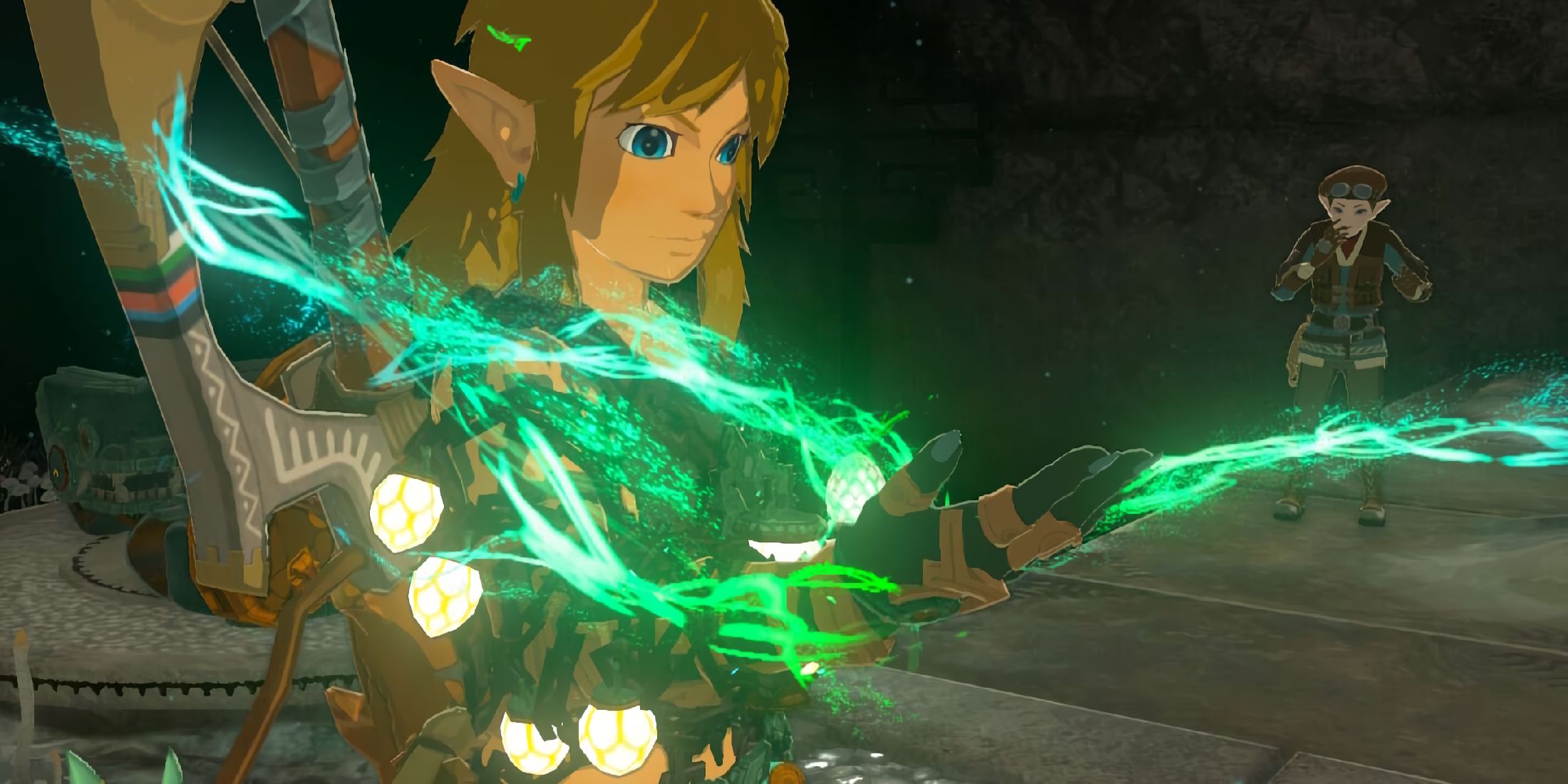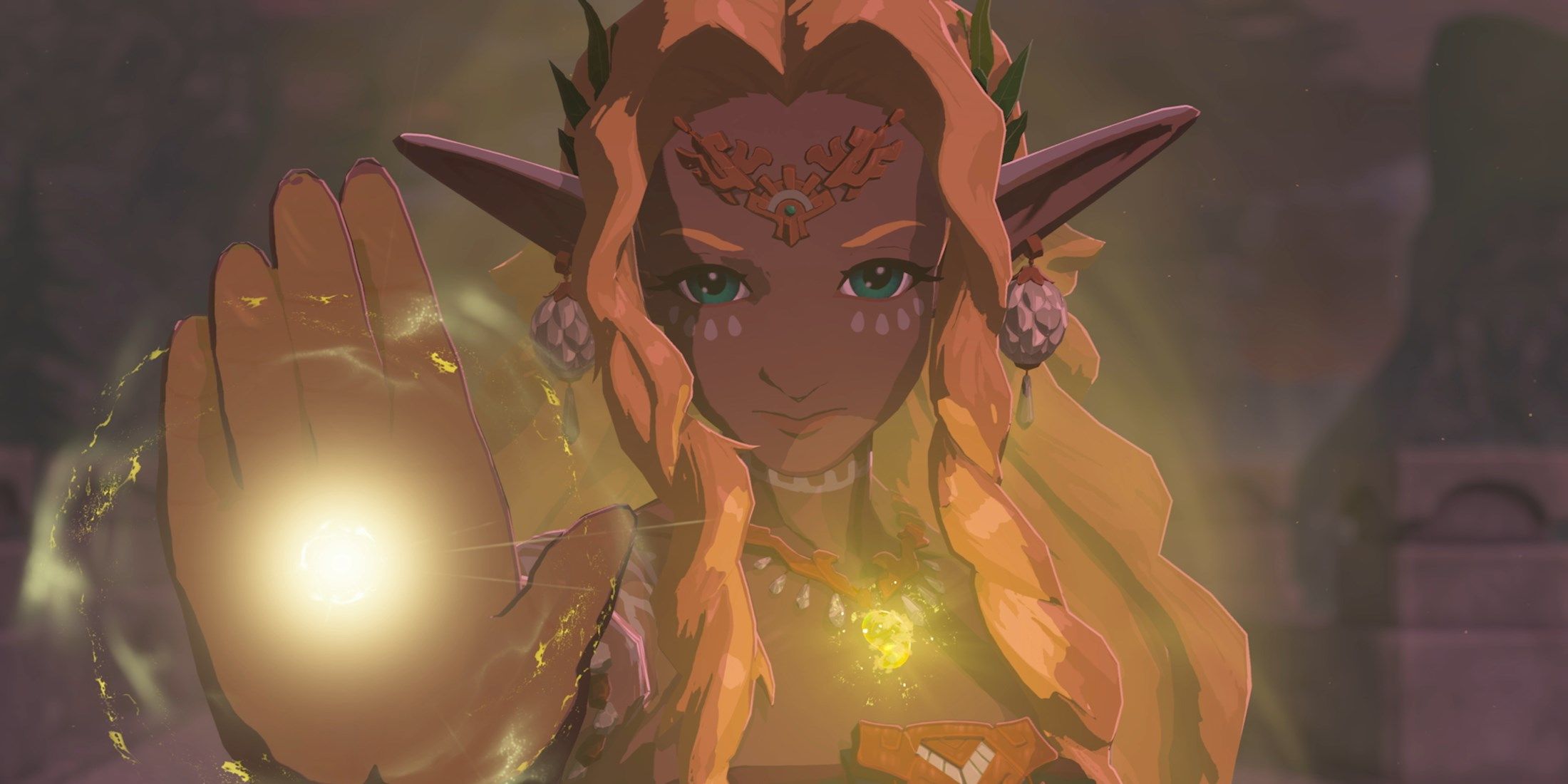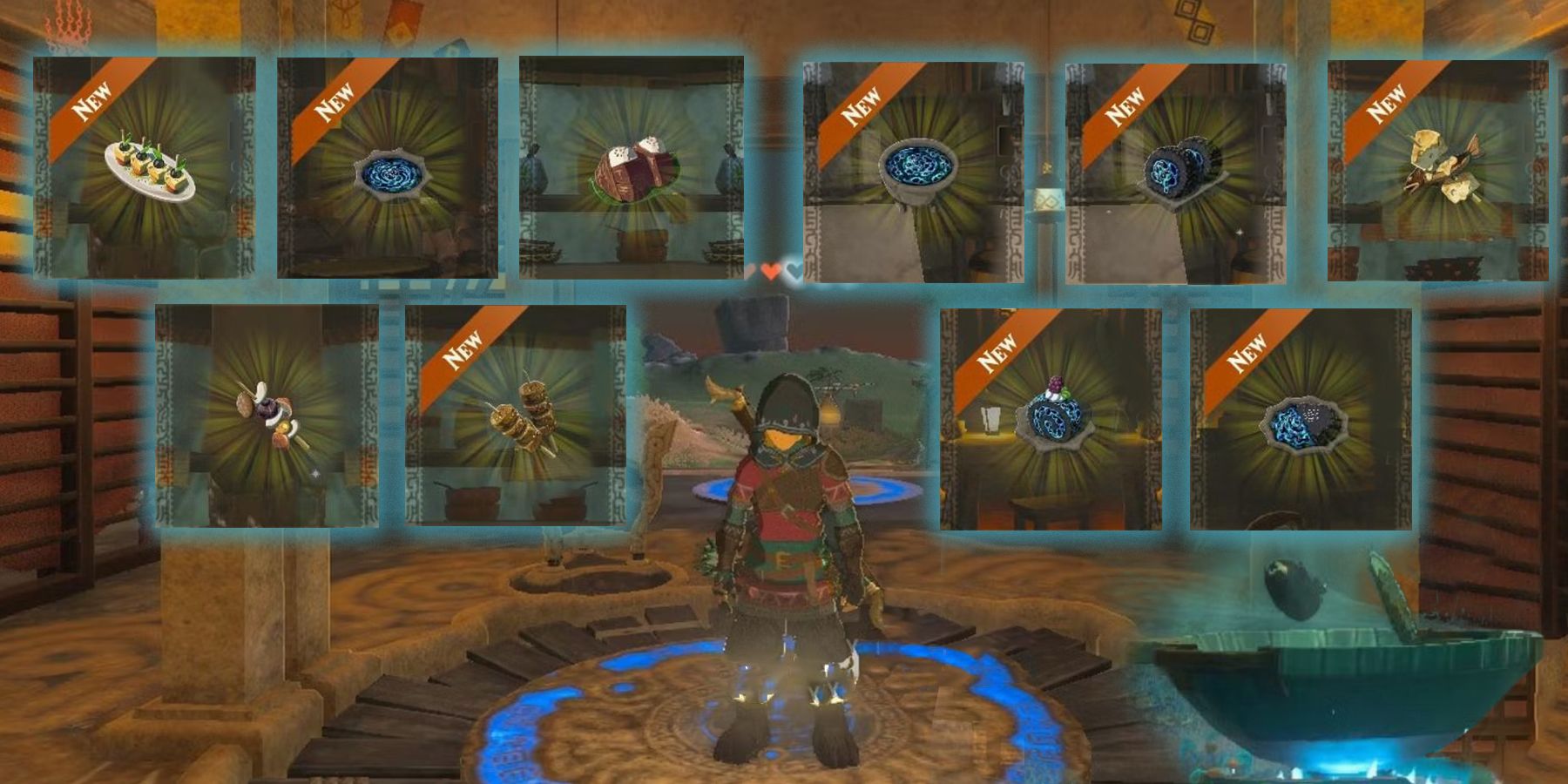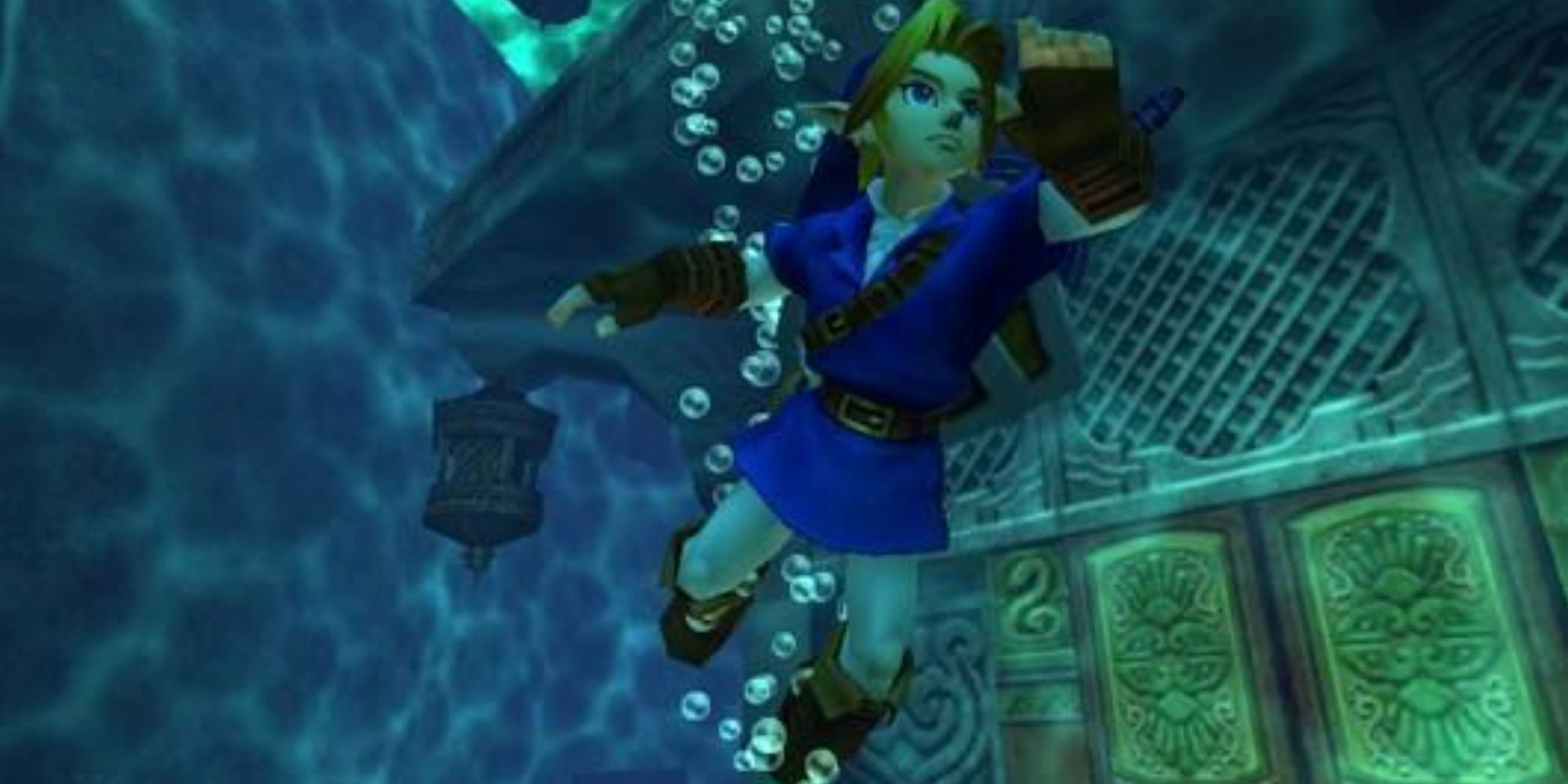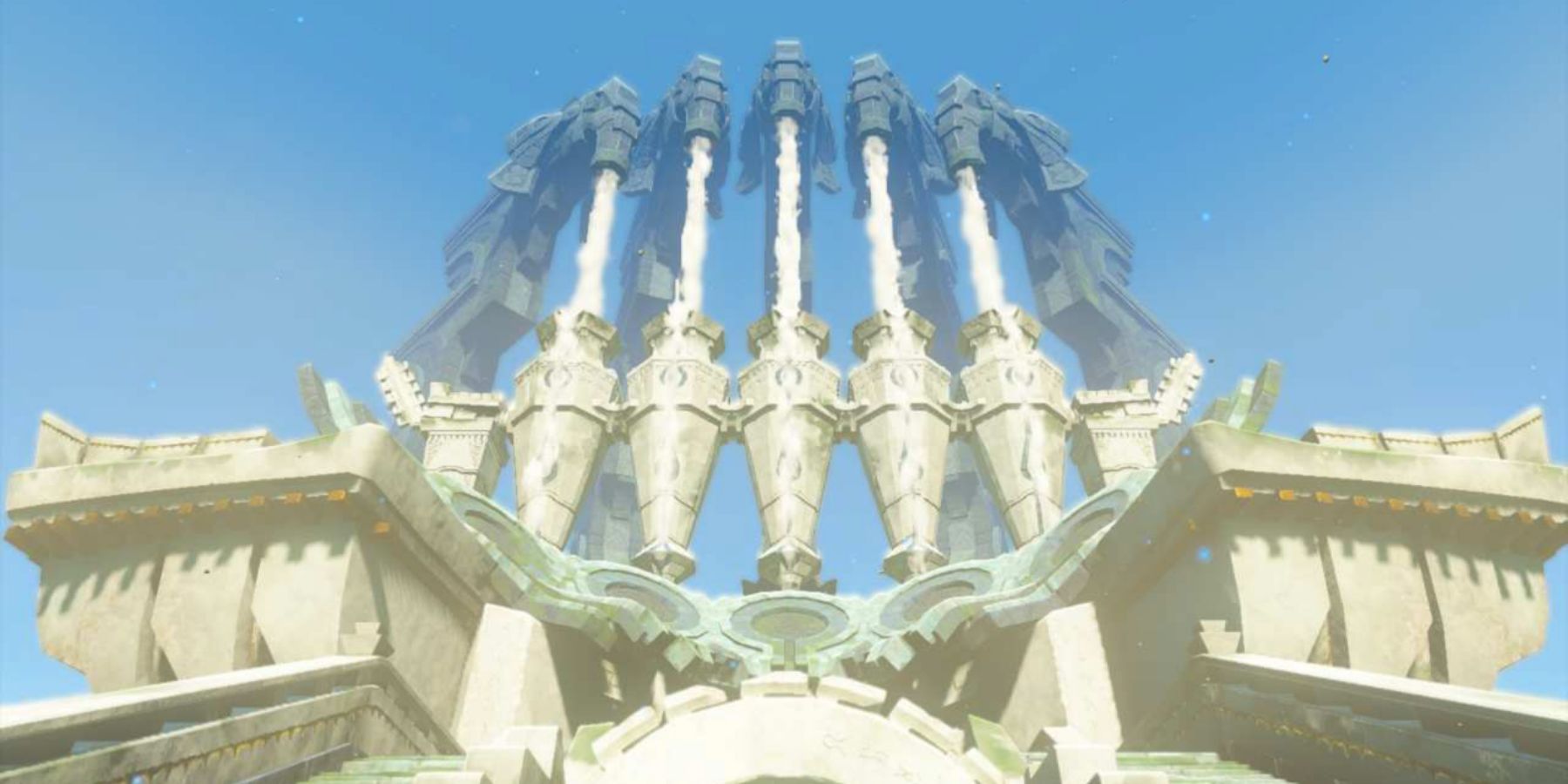Highlights
- Tears of the Kingdom revolutionizes the Water Temple concept by making water a tool for Link to use, rather than an obstacle to overcome. The temple is high in the sky, with altered gravity allowing Link to moon jump across platforms.
- In Tears of the Kingdom, Link can utilize water to clean out sludge, uncover hidden switches, and reach higher places. Water becomes a means for Link to progress further in the temple, instead of being a hindrance.
- The inclusion of water as a tool rather than a gimmick in Tears of the Kingdom adds a new layer of creativity and depth to the gameplay, making it a standout installment in the Legend of Zelda franchise.
The Legend of Zelda: Tears of the Kingdom has been a runaway success for the Nintendo Switch, serving as both another smash hit for the franchise and one of the great final exclusives for the console during its twilight years. The scale of the game is enormous, unbelievably dwarfing the already gargantuan size of Breath of the Wild with an adventure that spans the skies, surface, and underworld. The main quest alone can take several hours to complete, never mind the nearly endless list of side content and activities to discover.
One criticism of Breath of the Wild was that the trademark dungeons the series was known for were lacking thematically, all looking too similar to one another. Tears of the Kingdom greatly improved upon this, by including dungeons that once again feature an elemental theme, with the puzzles and area built around this core concept. Going an extra step beyond, however, one dungeon in Tears of the Kingdom arguably outdid a particular theme far better than any previous installment.
The Problem with the Water Temple in Past Zelda Games
As stated, The Legend of Zelda games feature several challenging dungeons filled with enemies and puzzles, all of which revolve around a specific element. Forest, Fire, Shadow, and others are all recurring concepts in several installments as well as Water, which has been the most divisive of them all. Practically every appearance of water-themed Zelda dungeons or temples has been met with mixed opinions, ranging from players feeling these areas were either too hard or too tedious, sticking out like a sore thumb within an otherwise highly praised collection set piece locations.
A recurring issue with these areas is how water is placed far too front and center as the main obstacle or gimmick to control and navigate. In both Ocarina of Time and Twilight Princess, players were tasked with repeatedly manipulating water levels in order to reach specific areas within the temple. This was seen as frustrating and repetitive, with its inclusion in Ocarina of Time specifically being seen as the weakest part of the experience. In other examples such as Oracle of Ages, water is used as a constant obstacle, as Link needs to swim through the entire temple. This inhibits movement and can make things needlessly cumbersome on top of trying to fight enemies and solve puzzles. By comparison, it's not as if Link must constantly slice through vines in the Forest Temple or use a light source to cut through the darkness of the shadow temple.
How Tears of the Kingdom Reinvents the Water Temple
In a wise creative shift, Tears of the Kingdom utilizes the theme of water as a tool instead of an obstacle or gimmick this time around. Rather than the Water Temple being submerged deep underwater, it is now high in the sky above the world of Hyrule, with altered gravity resulting in Link being able to moon jump across platforms. Rather than the water itself being something in Link's way that he must overcome, it is instead something Link can use to directly control and use to his advantage in order to progress further in the temple.
Link can use water to clean out sludge similar to FLUDD in Super Mario Sunshine, in order to uncover hidden switches and other interactive objects. Furthermore, water bubbles can be utilized to cleverly reach higher places, carrying this idea of Link using the water in service of himself as opposed to something that must be dealt with. This continues all the way into the boss battle of the temple, Mucktorok, in which water must again be used as a tool by the player to wash away the sludge covering the enemy before landing the finishing blow.
The Legend of Zelda: Tears of the Kingdom is available now exclusively on Nintendo Switch.

